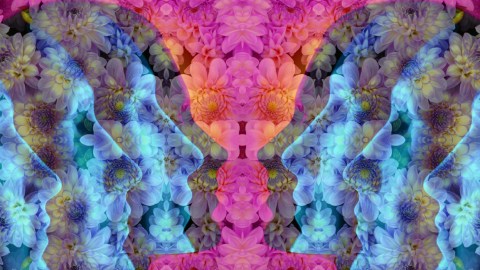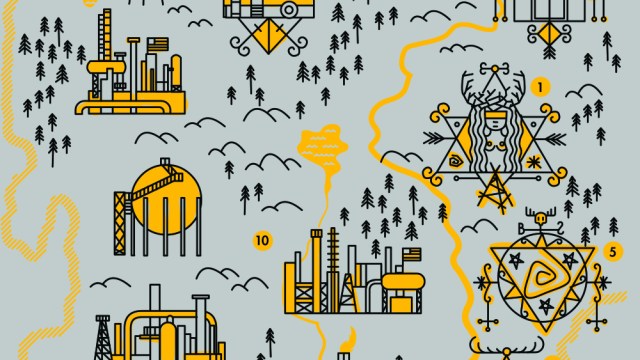What a Long Strange Trip: Psychedelic Research in America

While most media coverage is focused on marijuana legalization, an entire class of substances has been slowly creeping into mainstream American consciousness. In February, Michael Pollan reported on the growing research of psychedelics being conducted at universities and institutions. While numerous figures helped open up the American mind in regards to the therapeutic value of these substances, Rick Strassman was the first doctor in decades to get governmental clearance to begin clinical research in DMT.
Strassman’s book, DMT: The Spirit Molecule, opened the door for researchers nationwide, as well as inspiring a documentary of the same name. With over a half-million Netflix ratings and 685k Facebook fans, the film became a cult sensation and entry point for psychedelic consumers to learn more about the main ingredient in the South American brew known as ayahuasca. I recently chatted with producer and director Mitch Schultz, who has leveraged the success of his film to co-found a new multimedia platform, Mythaphi.
What is DMT?
DMT, or dimethyltryptamine, is a very simple compound found within our bodies and all over nature, but it is also one of the most potent and profound psychedelics known. There was some human research done with this back in the early ’90s, and it was through that lens that I wanted to tell this story. I came to it through a DMT experience, and it changed my entire reality.
What was your first experience like?
That was the kicker for me. I had not heard of DMT prior; that was in 2002. I thought I had experienced a lot with mushrooms and other psychedelics. And then a gentleman brought some to a small gathering; he didn’t have much to say about it except that it was going to last for a short while and it was very different than any of the other psychedelics that I had had. He was right and then some. Within those 10 minutes I registered that I was having a dying experience; there was a resonance in my head as information was flying by. Then I settled into one of the most beautiful and mystical experiences I had ever had in my life. I came back scratching my head wondering what had just happened.
What did you experience?
You start to play with the patterns and see the patterns a little bit, and sometimes some of this talk and description can sound a little crazy to many out there. But these experiences can go from angelic to alien, even seeing these bigger connections in our lives on a bigger scale.
Can you explain the difference between DMT and ayahuasca?
Ayahuasca is the brew from the Amazon. It’s made out of two different plants. It’s orally active in that form, while with DMT, people are usually freebasing or vaporizing it. Ayahuasca will last three to four hours, while DMT will last roughly 10 minutes. It’s not just the duration, but it’s also the content. The DMT world has much more of a technological and mechanical element to it, while ayahuasca is more grounded and earthy. You can work with it a lot more, like you would with psilocybin, for instance.
What is the most powerful lesson someone can learn from ayahuasca?
For myself, it’s those moments of being completely humbled. I’m just brought to tears from not just the ecstatic nature of the experience, but in recognizing what life could mean and the possibilities that are out there — that we’re really just a small little piece of this constantly changing complex universe. I’m just humbled by how big and large and deep this thing goes.
As someone who is atheistic but has also had profound experiences on a number of psychedelics, including DMT and ayahuasca, I find it hard to find the language to describe what happens while under the influence.
One thing we wanted to be cautious of in the film is that people can come back from this experience with an almost zealous nature — you want to tell everybody and you just can’t believe what just happened. Sometimes that can be harmful when people get too caught up in the experience. The real question is: How are we bringing back this information and integrating it? How are we understanding ourselves in a completely different nature and the rest of the world?
It makes me happy that so much therapeutic research has occurred in the last few years, mostly thanks to the main figure in your documentary.
There’s a lot that’s going on. Dr. Strassman’s research really helped open that back up. But the big stuff is the psilocybin research. Johns Hopkins, UCLA, and NYU have been giving terminally ill cancer patients psilocybin to deal with the anxiety of death. And roughly 75 percent are having a top three experience of their life, finding purpose and meaning. There’s nothing more we can give back to people as they’re going through the dying process than giving comfort. A lot of the times, that’s done through pain medication and opiates as opposed to getting to the core of what life is all about. These substances can make a huge difference in finding that peace.
We don’t know how to die in America. We’re not given instruction; we’re simply sent off with a cocktail of drugs without any sense of ritual.
There are a lot of regrets for people when they get to the end of their lives, especially in the Western world. We’ve been living in a fast-paced industrialized push for years. I think we’re coming back to a place where we need to address these things in a big way. Looking at some of these traditional medicines—and they really have been traditional medicines throughout history—we are getting back to what they can offer us.
One of the biggest breakthroughs with psychedelics has been in addiction recovery.
I’ve struggled with addiction and depression myself. Utilizing these substances has helped me go back to moments to see how trauma got embedded into my behavior patterns, my thoughts, everything that I did. Tracing those patterns back, you can start to understand it’s just one reality tunnel, and then you can change it. You can move it and start to adjust who you are and who you want to be and not be bound to it.
Follow these links to listen to the full interview on iTunes and Soundcloud.
Photo: Images Etc Ltd





